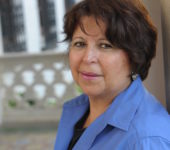•by Adela Solís, Ph.D. • IDRA Newsletter • May 2006 • 
Teacher quantity and teacher quality are two related issues receiving much attention today. Expert researchers and practitioners alike agree that access to a qualified teacher is about the most important determinant of student achievement. Alternative certification is one approach to expanding the pool of professionals who can become highly qualified teachers. Although many states now staff their schools with teachers prepared through alternative certification routes, there is a growing concern about the quality and relevance of the programs to produce excellent teachers, especially teachers to serve the teaching fields with the most needs – math, science, special education and English as a second language and bilingual education.
This concern has stimulated inquiry into what comprises effective practices in alternative certification. Common themes have emerged from research on effective certification programs pertinent to general alternative certification and especially for specialization in ESL and bilingual education. Key questions for which answers are being sought from research are: What models are being implemented? What constitutes a rigorous but efficient program? How effective are they in preparing highly qualified teachers? What are the policy implications?
Below are some key resources and literature citations that provide up-to-date information useful in answering these pressing questions and in creating and evaluating quality programs.
IDRA Resources
An Action Agenda for Effective Accelerated Preparation of English Language Learners
(R.G. Rodríguez and A. Villarreal. IDRA 2004)
This action agenda offers insights and recommendations gathered from IDRA and other researchers’ work regarding best practice and excellence in alternative, accelerated programs. The document addresses changes needed at the institutional levels kindergarten through grade 12 and higher education to bring positive practice to scale in high-need communities. See excerpt in the May 2005 issue of the IDRA Newsletter at http://www.idra.org/resource-center/effective-bilingual-teacher-preparation/.
Certification and Endorsement of Bilingual Education Teachers: A Comparison of State Licensure Requirements
(E. Midboche. IDRA and ASU, 1999)
This document details the requirements for certification and endorsement for prospective bilingual education teachers in seven states with high concentrations of limited-English-proficient (LEP) children – Arizona, California, Colorado, Illinois, New Mexico, New York and Texas. Specifically, the following questions were researched: What are the prevailing requirements for becoming a licensed bilingual education teacher in the United States? How do these requirements compare and contrast among selected states? To what extent are the use of specific competencies and standards for measuring them been adopted in bilingual education?
Mexican Normalista Teachers as a Resource for Bilingual Education in the United States: Connecting Two Models of Teacher Preparation
(J.E. Petrovic, G. Orozco, E. González, R. Díaz de Cassío. IDRA and ASU, 1999)
This publication provides an international comparative perspective on teacher preparation in Mexico and the United States, with a special focus on the preparation of bilingual education teachers. Its primary audience consists of teacher educators, program administrators, international transcript evaluators, and registrars in the United States working with students (professionals) who have prior teacher preparation in the Mexican system and are interested in teaching in the United States.
Other Resources
Alternative Certification: A Review of Theory and Research
(Learning Point Associates and North Central Regional Educational Laboratory, 2002)
In this document, NCREL provides educators and policymakers with up-to-date information on alternative certification issues and practices. The document includes these components: introduction, background and history, research and evaluation, characteristics of effective programs, conclusion and references. http//:www.ncrel.org/policy/pubs/html/altcert/index.html.
Being an Effective Mentor: How to Help Beginning Teachers Succeed
(K.F. Jonson. Thousand Oaks, Calif: Corwin Press, Inc., 2002)
This book provides mentor teachers and other mentors practical ideas on how to mentor and support new teachers. It is a useful guide with examples of how, when and what to do to ensure that new teachers receive appropriate guidance so that their students can succeed academically.
Literature Review of Research on Alternative Certification
(Washington, D.C.: National Education Association, 2004)
This publication of the National Education Association is a thorough and timely publication that documents the latest evidence pertinent to the need (shortage and teacher quality), the politics and policies informing current programs, and the component of effective programs (recruitment, retention, program goals, design and others). The main purpose of this work is to aid practitioners’ understanding and help them to create the best design and implementation of such programs. Full text posted at http://www.teach-now.org with permission from NEA.
Preparing Quality Educators for English Language Learners: Research, Policies and Practices
(K. Tellez and H.C. Waxman [Eds]. Mahwah, NJ: Lawrence Erlbaum Associates, 2006)
This collection of papers focuses on preparing quality teachers in the areas of English language learning. Researchers describe the challenges facing teachers and programs who are not up-to-date on the educational needs of English language learners. It emphasizes programmatic and instructional improvements that would make the preparation of teachers of English language learners a successful endeavor.
Preparing Teachers for a Changing World: What Teachers Should and Be Able to Do
(L. Darling-Hammond and John Bransford (Eds.), Jossey-Bass Publishers, 2005)
This book was written for teacher educators in traditional and alternative certification programs. It addresses the key foundational knowledge for teaching and discusses how to implement that knowledge in the classroom. It provides specific insights and recommendations on teacher skills and understandings, including knowing how people learn, how children acquire language, and how to deliver strong subject matter teaching.
http://www.josseybass.com/WileyCDA/WileyTitle/productCd-0787974641.html
Transitions to Teaching Program for Accelerated Teacher Preparation
IDRA has established effective alternative certification programs through three Transitions to Teaching projects funded under the No Child Left Behind Act. These projects are increasing the number of fully-qualified and credentialed ESL/bilingual teachers working with English language learners in high-need schools. The projects support teacher preparation and certification through alternative teacher certification routes for bilingual and Spanish dominant career-changing professionals and recent college graduates – in fields other than education – who desire to enter teaching and have a specific interest in bilingual education. A special focus is the recruitment of professionals from Mexico and other Spanish-speaking countries who are legal residents and can work in the United States. Using three key components (early identification and recruitment, pre-service training for certification and placement, and sustained in-service training/professional development and support) these projects are impacting seven colleges and universities and more than 11 high-need school districts.
Comments and questions may be directed to IDRA via e-mail at feedback@idra.org.
[©2006, IDRA. This article originally appeared in the May 2006 IDRA Newsletter by the Intercultural Development Research Association. Permission to reproduce this article is granted provided the article is reprinted in its entirety and proper credit is given to IDRA and the author.]



